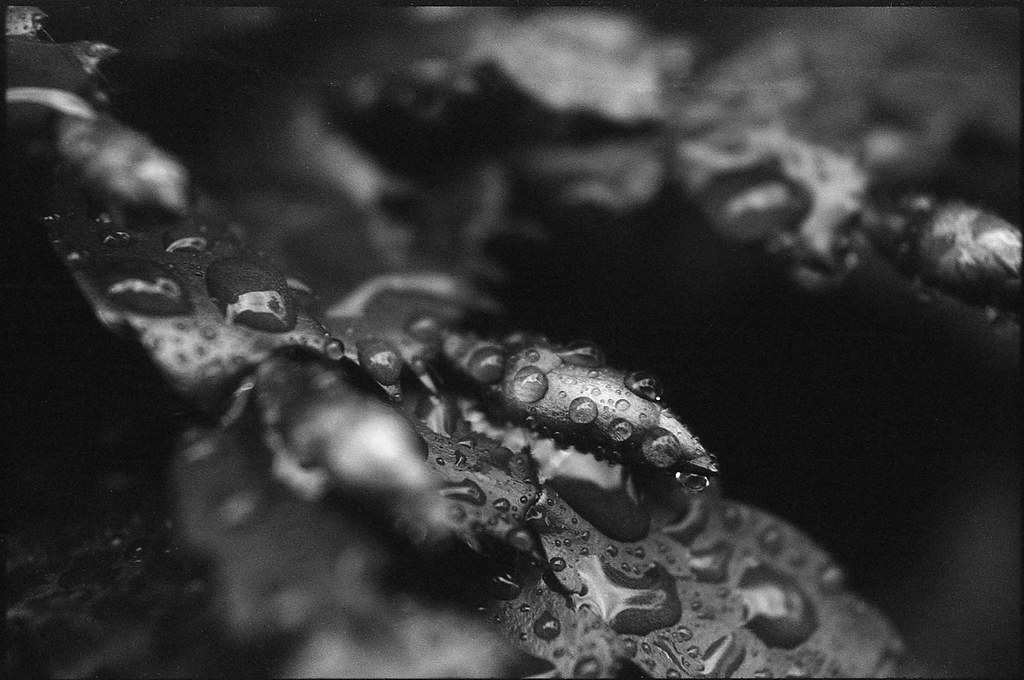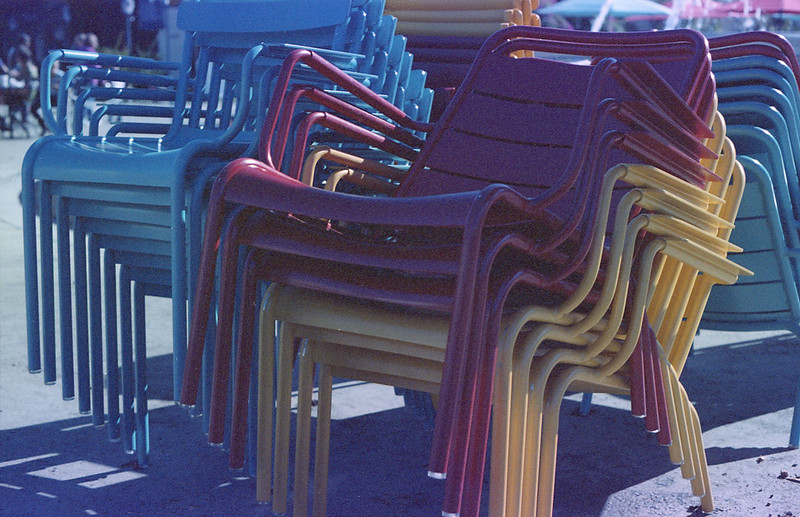Okay, that title is a little misleading since I am only going to show black and white photos in this post. But I was out around the neighborhood shooting some colorful leaves the other day and the film I had loaded in my Pentax K1000 was my trusty Kodak Recordak Dacomatic. This film was intended for use in the Recordak Microfilmer.
I am old enough to have used microfilm and microfiche in college. It was just for copying text and half-tone images, so really it was just a high contrast medium, not intended for pictorial use at all. There was no need for it to be even panchromatic (sensitive to all visible wavelengths of light), so it was orthochromatic (sensitive to the blue/uv end of the spectrum). That means that red things tend to be dark, even black when photographed with this film. So I had this in mind when I went out for my walk. There aren't many colorful trees here in San Diego, but one that does turn a nice color is the liquidambar tree. The leaves turn a deep red color from November throughout the winter. If there isn't much wind or rain, many leaves stay on the tree. So I decided to try a few shots of these red leaves using my orthochromatic (red insensitive) film. I got pretty much what I thought I would... some very dark colored leaves with good detail. I developed the film in X-tol diluted around 1+3 for 11 minutes with agitation every 30 sec. The film was exposed at EI 100 which is a little fast for this, especially with red subjects, but I still got some decent images.


This last one is of a red Christmas Cactus with some water drops. The red subject with this film becomes pretty abstract, which I often like.

I hope you enjoyed this little trip down 'Orthochromatic Lane'. Expired microfilm is a fun change of pace for people who like black and white images, but are a little bored with the usual offerings of Tri-X and FP5. Give it a shot and let me know how it goes!






